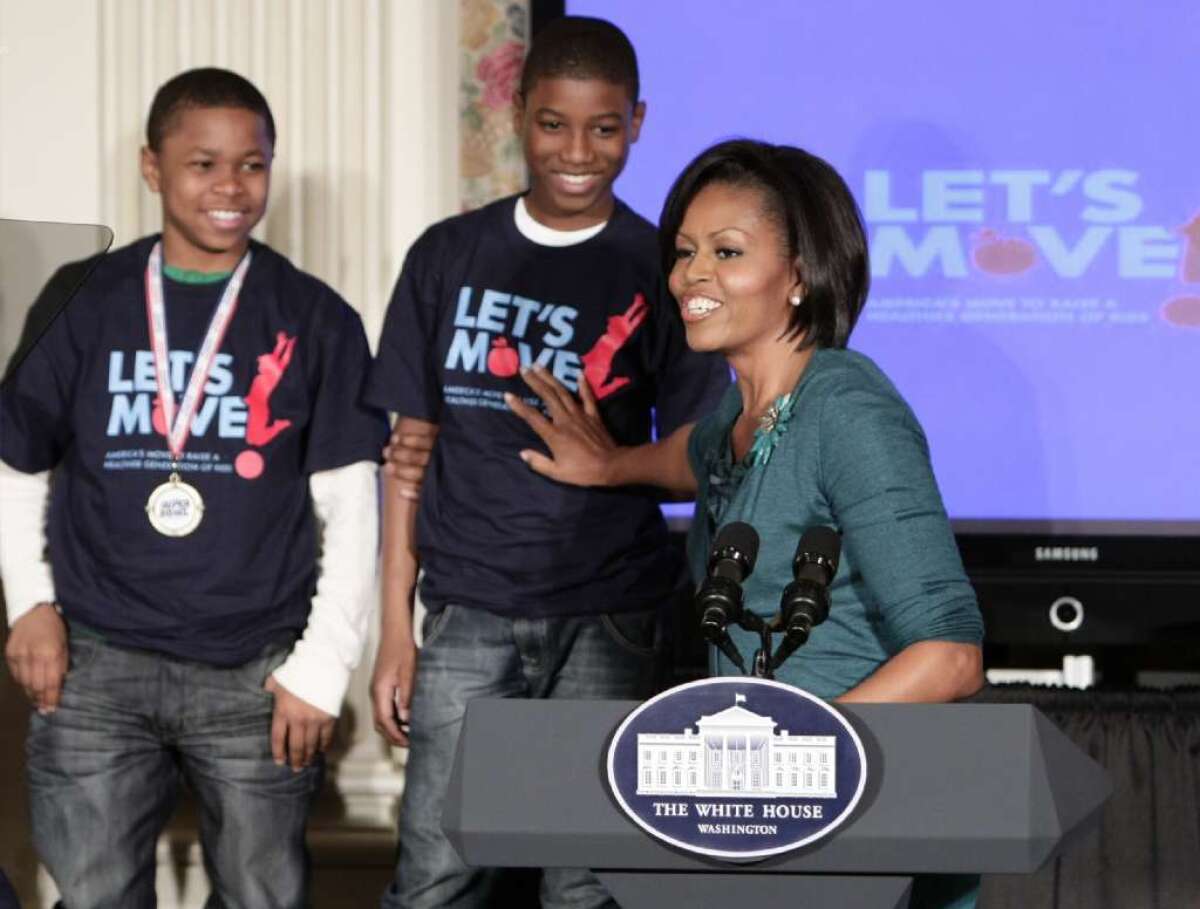Halloween experiment shows Michelle Obama’s health campaign works

- Share via
As President Obama and Mitt Romney make a last-minute push for votes, First Lady Michelle Obama can already chalk up a small victory for her campaign to fight childhood obesity.
In a semi-scientific study conducted on the front porch of a Yale University economist on Halloween night, children who viewed a picture of the first lady and were then offered a choice of fruit or candy were much more likely to select the healthful snack than their counterparts who were shown a photo of Ann Romney.
The experiment included 165 trick-or-treaters who came to Dean Karlan’s porch in New Haven, Conn. To earn their candy, they had to participate in Karlan’s unconventional economic research.
Working with student volunteers, his wife, Cindy, and their three children — ages 13, 12 and 10 — Karlan had the kids look at a picture of one of the presidential candidates’ spouses. Then they were asked to pick either candy or fruit. Among those 9 and older, 38% who were presented with Obama’s photo opted for fruit, Karlan said. That was twice as many as the 19% who picked fruit after viewing the picture of Romney.
Obama’s “Let’s Move” campaign must be having an effect on those children old enough to hear about it, Karlan surmised.
“That was really cool,” he said of the double-digit effect.
Unfortunately for the public health crowd, there was no similar effect in the 8-and-under crowd — perhaps because they were too young to have been exposed to the campaign, or even know who Obama is, Karlan said.
The results may not meet Yale’s usual standards of experimental rigor, Karlan acknowledged. But the study did impress his colleague Christopher Udry, an economist who was not involved in the research effort.
“That’s a blast,” said Udry, who lives in Karlan’s neighborhood and allowed his kids to be test subjects. “I think Michelle Obama should be told about this.”
In another experiment, Karlan asked 158 children to “vote” for either the Democratic president or his Republican challenger. Heading to either candidate’s table would earn one candy. Not surprisingly to Karlan, the children in his liberal-leaning neighborhood picked Obama by a margin of more than 4 to 1.
But when kids were offered two pieces of candy to side with Romney, some older children switched sides, dropping Obama’s support from 83% to 69%.
Simon Doss-Gollin, 14, dressed as a wind turbine with actual spinning rotors, was among those who waffled. “I almost went to Romney because the line was shorter, but I stuck with my vote and went to the Obama side,” he said.
The promise of more goodies didn’t entice the 8-and-under crowd, however. Obama’s vote among that demographic actually rose slightly, from 82% to 86%, after being presented with the same offer.
This gap between the two age groups may be a sign that younger children think more in absolutes, while older kids are able to put their decisions in context, Karlan said.
Those results reinforced Karlan’s findings from four years ago. On Halloween in 2008, the lure of extra candy for backers of GOP nominee John McCain ate into Obama’s support among the 9-and-up voter block while the 8-and-unders held their ground.
“I’m very excited that we replicated the same result,” Karlan said. “It’s really striking.”
Karlan said he has tried to get the results of his Halloween experiments published in the past, submitting them to research journals that consider more lighthearted submissions. Some reviewers didn’t get the joke; others have said the premise wasn’t funny enough.
“The results are actually pretty scientifically sound in the sense that they really are randomized and they collect the data at the time,” Udry said. But he added, “It is important to keep in mind that it is all in fun.”
More to Read
Get the L.A. Times Politics newsletter
Deeply reported insights into legislation, politics and policy from Sacramento, Washington and beyond. In your inbox twice per week.
You may occasionally receive promotional content from the Los Angeles Times.










